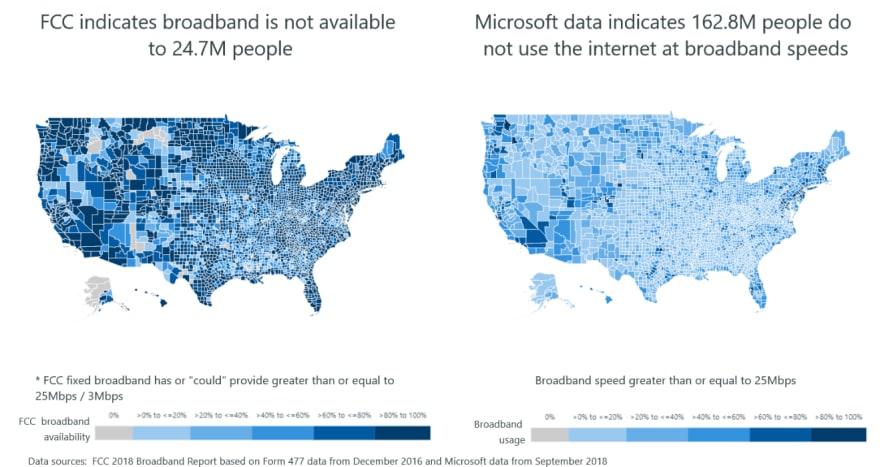High speed internet is defined as one with a download speed of at least 25Mbps and an upload speed of at least 3Mbps. The Federal Communications Commission (FCC) estimates that 25 million people in the US don't have access to high speed internet, but research done by Microsoft last year found that that number is way off. Instead, they've found that 162.8 million people--or half of Americans--don't have high speed internet. This has always mattered, but, like other forms of web accessibility, it matters even more now.
Using anonymous data across the country, Microsoft found that half of Americans don't have access to broadband internet. How are the FCC's numbers so wrong? The FCC's data comes not from surveying every household--rather, to gather their statistics, they ask internet service providers if they do provide or "could provide" broadband to each census tract. This system also means that if a one person in an entire census tract has broadband internet, then that entire area is said to have high-speed internet (which, especially in rural areas, can be very large).
Check out this map--on the left, is the high speed internet coverage as claimed by the FCC. On the right, is the coverage as found by Microsoft.
After the publishing of the Microsoft report, in August 2019 the FCC decided to change how data on broadband access would be collected. (You can read the whole ruling here or the press release [here].(https://docs.fcc.gov/public/attachments/FCC-19-79A1.pdf)) The FCC decided to establish a group, called the Digital Opportunity Data Collection, which would collect data through crowd-sourcing from citizens and governments, in addition to the data provided by internet service providers. However, this system still isn't good enough--internet service providers are still instructed to record "each block in which you could (or do) provide services".
While not enough time has passed to evaluate if these new guidelines will give a more accurate picture of high-speed internet access, having an accurate map does not, in and of itself, form the solution. A solution will have to come in the form of significant government investment and a disruption to the telecommunications industry.
High speed internet access is something that many of us take for granted, and yet so much of the US--not to mention the rest of the world--does not have it. It's hard to overstate how invaluable high speed internet is, and times like now make that even more apparent. Health care, school, and work are just a few of the things that are now remote for most Americans. Having affordable high speed internet is a necessity.








Top comments (1)
are these results including mobile data?